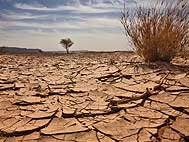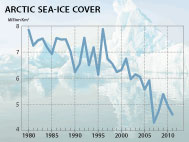| SEARCH |
-

Nov 17, 2015
Reflections on a three-decade legacy
The International Geosphere-Biosphere Programme (IGBP) will come to a close at t...
-
Nov 17, 2015
Use of and access to content on this website
Text and images produced by IGBP in house are free to use with appropriate credi...
-
Nov 12, 2015
Bella Gaia performance and panel discussion to mark IGBP's closure
A musical performance by Bella Gaia will celebrate the achievements and legacy o...
-

Towards Future Earth:
evolution or revolution?
During its three decades of existence, the International Geosphere-Biosphere Pro...
-
A personal note on IGBP and the social sciences
Humans are an integral component of the Earth system as conceptualised by IGBP. João Morais recalls key milestones in IGBP’s engagement with the social sciences and offers some words of advice for Future Earth.
-
IGBP and Earth observation:
a co-evolution
The iconic images of Earth beamed back by the earliest spacecraft helped to galvanise interest in our planet’s environment. The subsequent evolution and development of satellites for Earth observation has been intricately linked with that of IGBP and other global-change research programmes, write Jack Kaye and Cat Downy .
-
Deltas at risk
Around 500 million people worldwide live on deltas, but many of the world's deltas are sinking due ...
-
Climate change: the state of the science
A new data visualization released on the first day of the plenary negotiations at the UNFCCC’s clima...
-
Climate Change:
the State of the Science
Videos now online from the Stockholm public forum to mark the launch of the IPCC's climate report, 2...
The oxygen minimum zone in the eastern North Atlantic south and east of the Cape Verde Islands
Stramma L, Brandt P, Schafstall J, Schott F, Fischer J and Körtzinger A
Vol 113; Issue C4; pp. 1-15

The open-ocean oxygen minimum zone (OMZ) south and east of the Cape Verde Islands is studied from CTD hydrography, ADCP velocities, Argo float trajectories, and historical data, with a focus on the zonal supply and drainage paths. The strongest oxygen minimum is located north of the North Equatorial Countercurrent (NECC) at about 400 to 500-m depth just above the boundary between Central Water and Antarctic Intermediate Water (AAIW). It is shown that the NECC, the North Equatorial Undercurrent at 4 to 6 degrees N, and a northern branch of the NECC at 8 to 10 degrees N are the sources for oxygen-rich water supplied to the OMZ in summer and fall. A weak eastward NECC at 200-m depth also exists in winter and spring as derived from Argo floats drifting at shallow levels. Historical oxygen data from 200-m depth confirm this seasonality showing high (low) oxygen content in summer and fall (spring) within the supply paths. Compared to the strong oxygen supply at 150 to 300-m depth, the ventilation of the OMZ at 300 to 600-m depth is weaker. Westward drainage of oxygen-poor water takes place north of the Guinea Dome, i.e., north of 10 degrees N, most pronounced at 400 to 600-m depth. In July 2006 the total eastward transport of both NECC bands above sigma(theta)= 27.1 kg m(-3) at 23 degrees W was about 13 Sv (1 Sv = 10(6) m(3) s(-1)). About half of this water volume circulates within the Guinea Dome or recirculates westward north of the Guinea Dome.

IGBP closed at the end of 2015. This website is no longer updated.
-

Global Change Magazine No. 84
This final issue of the magazine takes stock of IGBP’s scientific and institutional accomplishments as well as its contributions to policy and capacity building. It features interviews of several past...
-

Global Change Magazine No. 83
This issue features a special section on carbon. You can read about peak greenhouse-gas emissions in China, the mitigation of black carbon emissions and the effect of the 2010-2011 La Niña event on gl...
-
INTERGOVERNMENTAL PANEL ON CLIMATE CHANGE:
How green is my future?
UN panel foresees big growth in renewable energy, but policies will dictate just how big.
-
UK:
'The Anthropocene: a new epoch of geological time?'
Royal Society, Philosphical Transactions A




















